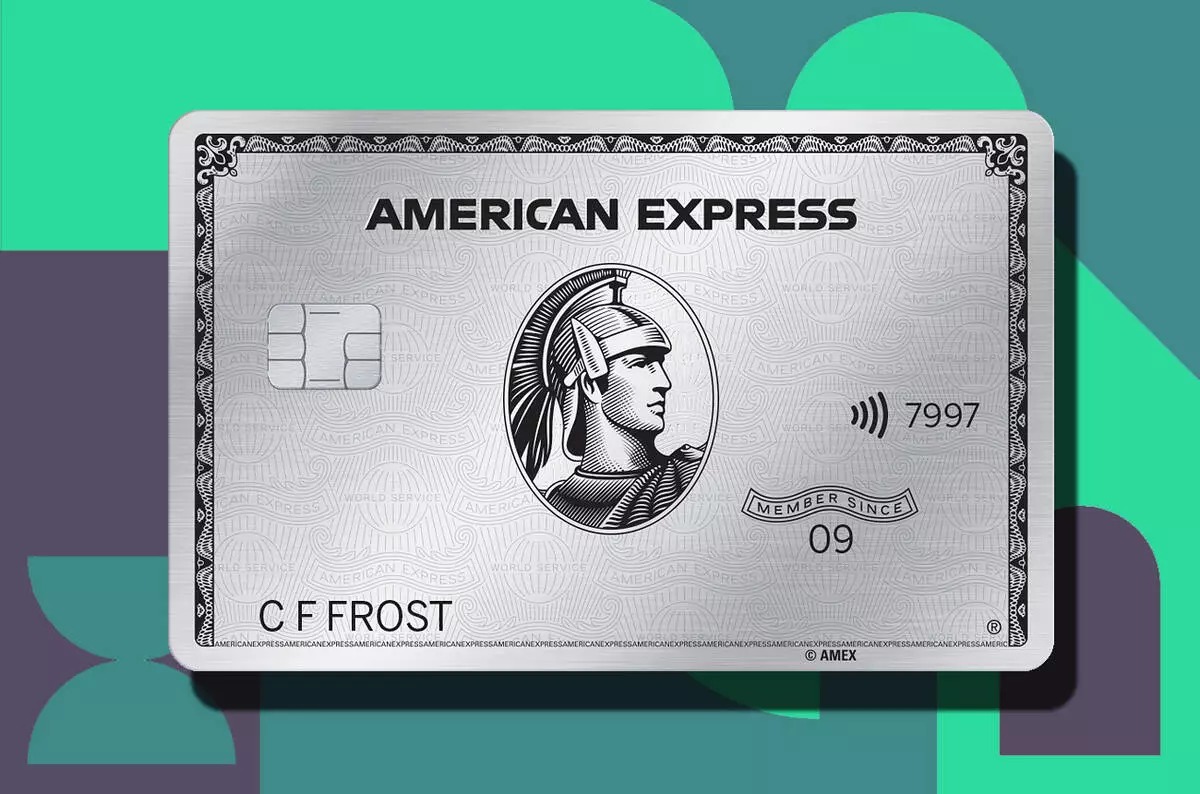

Finance
What Is The Amex Minimum Payment
Published: February 25, 2024
Learn about the Amex minimum payment and its impact on your finances. Understand how to manage your credit card payments effectively.
(Many of the links in this article redirect to a specific reviewed product. Your purchase of these products through affiliate links helps to generate commission for LiveWell, at no extra cost. Learn more)
Table of Contents
Introduction
Understanding the Importance of the Amex Minimum Payment
When it comes to managing credit card debt, understanding the concept of the minimum payment is crucial. Specifically, for American Express (Amex) cardholders, the minimum payment represents the lowest amount that must be paid by the due date to keep the account in good standing. However, it's essential to delve deeper into this seemingly straightforward financial obligation to comprehend its implications and long-term effects.
Paying only the minimum amount due on an Amex credit card can have far-reaching consequences, impacting not only the overall debt but also the cardholder's credit score and financial well-being. Therefore, gaining a comprehensive understanding of the Amex minimum payment, its calculation, and the factors influencing it is paramount for responsible financial management.
In this article, we will explore the intricacies of the Amex minimum payment, shedding light on its significance and the implications of paying only the minimum. Additionally, we will provide valuable insights into managing the Amex minimum payment effectively, empowering cardholders to make informed decisions and take control of their financial health. Understanding the nuances of the Amex minimum payment is the first step toward achieving financial stability and making prudent credit card management decisions. Let's embark on this enlightening journey to unravel the mysteries of the Amex minimum payment and its impact on cardholders' financial well-being.
Understanding the Amex Minimum Payment
Comprehending the Amex minimum payment entails grasping the methodology behind its calculation and the implications of adhering to this payment threshold. The minimum payment on an Amex credit card is typically calculated as a percentage of the outstanding balance, subject to a minimum dollar amount. This percentage can vary based on factors such as the cardholder’s creditworthiness and the prevailing terms and conditions.
It’s important for Amex cardholders to recognize that while the minimum payment allows for the retention of good standing on the account, it is not a recommended strategy for managing credit card debt. By paying only the minimum amount due, cardholders may incur substantial interest charges on the remaining balance, leading to prolonged debt and potential financial strain.
Furthermore, understanding the components of the minimum payment, including the portion allocated to interest and principal, provides insights into the dynamics of debt repayment. By examining the breakdown of the minimum payment, cardholders can gain a clearer perspective on the impact of their repayment strategy and make informed decisions regarding their financial management.
Delving into the specifics of the Amex minimum payment empowers cardholders to transcend the conventional approach of minimum payment compliance and adopt a proactive stance in managing their credit card debt. By unraveling the intricacies of the minimum payment calculation and its implications, Amex cardholders can make informed decisions that align with their long-term financial goals and mitigate the potential pitfalls associated with prolonged debt repayment.
Factors Influencing the Amex Minimum Payment
Several key factors influence the calculation of the minimum payment on an American Express (Amex) credit card, shaping the financial obligations of cardholders and impacting their debt management strategies. Understanding these influential factors is essential for cardholders seeking to navigate the dynamics of credit card repayment effectively.
- Outstanding Balance: The outstanding balance on an Amex credit card plays a pivotal role in determining the minimum payment. Typically, the minimum payment is calculated as a percentage of the total outstanding balance, with a minimum dollar amount stipulated by the card’s terms and conditions.
- Interest Rate: The annual percentage rate (APR) associated with the Amex credit card directly influences the interest portion of the minimum payment. A higher APR results in increased interest charges, consequently impacting the minimum amount due.
- Creditworthiness: Cardholders’ creditworthiness, as reflected in their credit scores and financial history, can influence the minimum payment percentage. Those with lower credit scores may face a higher minimum payment requirement.
- Terms and Conditions: The specific terms and conditions outlined by Amex for each credit card product dictate the minimum payment calculation methodology, including the percentage of the outstanding balance and the minimum dollar amount.
- Regulatory Requirements: Regulatory guidelines and consumer protection measures may impact the minimum payment calculation, ensuring that it aligns with established standards and safeguards the interests of cardholders.
By comprehending the interplay of these factors, Amex cardholders can gain a holistic understanding of the minimum payment calculation and its implications. This awareness empowers them to make informed decisions regarding their repayment strategy, debt management, and overall financial well-being. Additionally, by proactively addressing these influencing factors, cardholders can work towards optimizing their credit card repayment approach and mitigating the potential challenges associated with prolonged debt.
Impact of Paying Only the Minimum
Opting to pay only the minimum amount due on an American Express (Amex) credit card can have profound and long-term repercussions on a cardholder’s financial health. While the minimum payment allows for the retention of good standing on the account, it often leads to a cycle of debt accumulation and substantial interest charges, significantly impacting the cardholder’s overall financial well-being.
One of the primary consequences of paying only the minimum is the escalation of the total interest paid over time. As the remaining balance accrues interest, cardholders may find themselves trapped in a cycle of debt, with a significant portion of their payments allocated to interest rather than reducing the principal balance. This protracted debt repayment can lead to financial strain and impede progress towards achieving financial goals.
Moreover, consistently paying only the minimum amount due can adversely affect the cardholder’s credit score. High credit utilization, resulting from carrying a substantial balance relative to the credit limit, can impact credit scores, potentially limiting access to favorable credit terms and financial opportunities in the future.
Furthermore, the long-term financial implications of minimum payment reliance extend beyond immediate concerns. Cardholders may find themselves facing challenges in achieving important milestones, such as homeownership or retirement savings, as a result of prolonged debt repayment and the associated financial strain.
By understanding the impact of paying only the minimum, Amex cardholders can gain valuable insights into the potential pitfalls of this approach and the importance of adopting proactive debt management strategies. This awareness empowers cardholders to reassess their repayment approach, explore alternative strategies, and take steps towards breaking free from the cycle of minimum payment dependency, ultimately fostering financial stability and well-being.
Tips for Managing Your Amex Minimum Payment
Effectively managing the minimum payment on an American Express (Amex) credit card is essential for maintaining financial stability and mitigating the challenges associated with prolonged debt repayment. By implementing strategic approaches and adopting responsible financial practices, Amex cardholders can navigate the complexities of credit card repayment while working towards their long-term financial goals.
- Pay More Than the Minimum: Whenever possible, strive to pay more than the minimum amount due. By allocating additional funds towards reducing the outstanding balance, cardholders can expedite debt repayment and minimize the accumulation of interest charges.
- Create a Repayment Plan: Develop a structured repayment plan that aligns with your financial capabilities and goals. Prioritize paying off high-interest balances and consider consolidating debt or transferring balances to lower-interest options if feasible.
- Monitor Your Spending: Exercise prudence in your spending habits and strive to avoid accruing additional debt. By maintaining a vigilant approach to spending, you can prevent the escalation of credit card balances and facilitate more manageable repayment.
- Explore Financial Assistance: In cases of financial hardship, consider reaching out to Amex to explore potential assistance programs or hardship arrangements. Proactively addressing financial challenges can help prevent the accumulation of unmanageable debt.
- Understand the Terms and Conditions: Familiarize yourself with the specific terms and conditions of your Amex credit card, particularly those related to the minimum payment calculation and potential fees. This knowledge empowers you to make informed decisions and avoid unforeseen financial implications.
- Seek Financial Guidance: If navigating credit card debt becomes overwhelming, consider seeking guidance from financial advisors or credit counseling services. These professionals can provide personalized insights and strategies to support your debt management efforts.
By implementing these proactive tips and adopting a conscientious approach to credit card repayment, Amex cardholders can effectively manage their minimum payment obligations while working towards financial stability. Embracing responsible financial practices and remaining proactive in addressing debt management challenges can pave the way for long-term financial well-being and empower cardholders to take control of their financial futures.
Conclusion
Understanding the nuances of the American Express (Amex) minimum payment is essential for cardholders striving to navigate the complexities of credit card debt responsibly. The minimum payment serves as a foundational aspect of credit card management, impacting debt repayment dynamics and long-term financial well-being. By delving into the intricacies of the minimum payment calculation, its influencing factors, and the implications of minimum payment reliance, Amex cardholders can make informed decisions and adopt proactive strategies to manage their financial obligations effectively.
Opting to pay only the minimum amount due on an Amex credit card can lead to prolonged debt repayment, substantial interest charges, and potential credit score implications. However, by embracing responsible financial practices, such as paying more than the minimum, creating structured repayment plans, and seeking financial guidance when needed, cardholders can proactively address their minimum payment obligations and work towards achieving financial stability.
Ultimately, the journey towards managing the Amex minimum payment is a testament to the importance of financial literacy, prudent decision-making, and proactive debt management. By leveraging the insights and tips provided in this article, Amex cardholders can navigate the intricacies of credit card repayment, mitigate the challenges associated with minimum payment reliance, and pave the way for a future characterized by financial stability and empowerment.
Empowered with knowledge and equipped with proactive strategies, Amex cardholders can transcend the conventional approach of minimum payment compliance and embark on a transformative journey towards financial well-being and debt-free living. The path to effective minimum payment management begins with understanding, awareness, and a commitment to responsible financial practices, ultimately shaping a future defined by financial empowerment and freedom.














